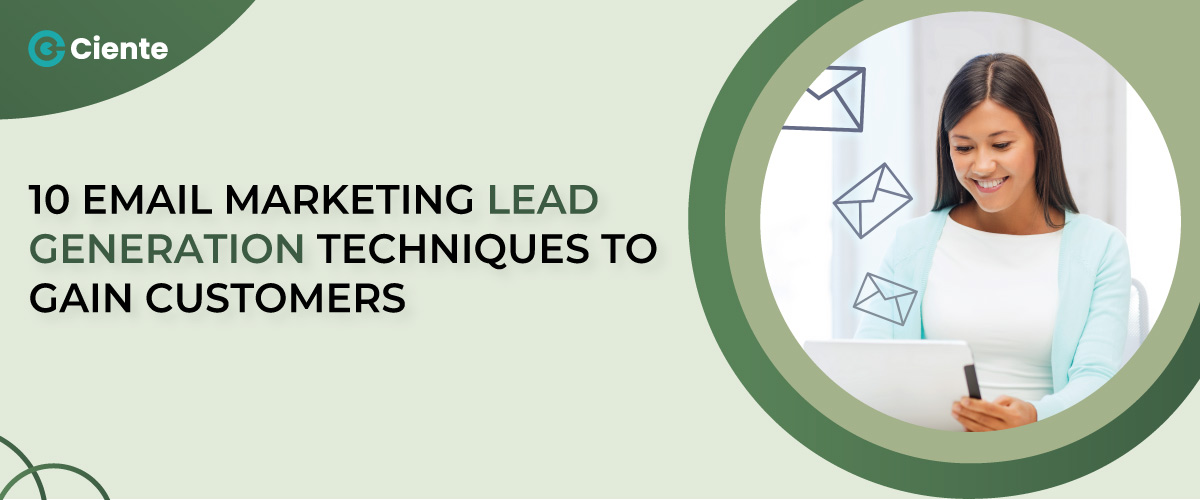Utilizing Industry Mapping to Ace the Competition in Your Business Domain
Determining the differences between you and your competitors is the key to sustaining the dynamic market. How can industry mapping help you in this arena?
Businesses with a robust customer engagement framework have a chance of retaining 89% of their customers. But, the B2B landscape is highly competitive, where getting customers on board can be challenging, let alone retaining them. Assessing competition from every angle is crucial to developing strategies and adapting your offerings to meet the prospects’ needs. The good news is— you can leverage industry mapping to tip the scales of competition in your favor.
Industry mapping is an assessment tool that provides an overview of what is happening in your domain, such as demand-supply statistics, the extent of competition, prospects of considering technological changes, and external influence.
Analysis of an industrial niche accounts for the various economic, technological, and environmental aspects that shape the competitive landscape. When you delve into these components, you can identify the strengths and weaknesses of your brand. You also become aware of the opportunities and potential threats present in the market.
Industry mapping is a perfect tool for learning about your company’s position relative to your competitors. Let’s dive into more details of this strategic process.
Significance of mapping your specific industry
As you know, the business sector is highly competitive, where achieving a cutting edge is crucial for staying ahead. This is where industry mapping chips in by helping you weigh the market conditions. You view the big picture of the demand and supply chain and the financial returns you can receive from your business. It enables you to estimate brand positioning and derive data to understand whether your business is expanding or reaching saturation point.
A roadmap of this process guides entrepreneurs like you to discover untapped opportunities. To be precise, industry mapping helps you-
- Overview of your competition: find out who else is in the market, what they are doing, and how you can stand out.
- Identify opportunities: determine the scope for growth and prevent potential issues by visualizing the trends and patterns.
- Improve strategy planning: know what is happening in the industry’s landscape and make it easier to compete effectively and expand your business.
- Remain updated: it informs you about what is happening in your industry so you can adapt to changes and stay ahead of the competition.
- Make informed decisions: armed with insights, you can adopt better fact-based decision-making, which increases your chances of success.
Key elements of an industry analysis
We have prepared a list of elements that form the core foundation of the industry mapping:
- Market size and growth: Assess the current market size and your brand’s growth trajectory.
- Key players: Identify major companies and competitors in the industry.
- Trends and changes: Analyze current trends and anticipate future shifts in the industry.
- Competitive landscape: Evaluate the intensity of competition and strategic approaches used by competitors.
- Opportunities and threats: Identify potential growth opportunities and risks that hinder business operations.
Benefits
These advantages offered by industry mapping make it a must-have for your business:

Know your competitors
When you learn more about other businesses in the same domain, you know how to design effective marketing strategies for your offerings to sustain the competition. The intrinsic characteristics of industry mapping pave the way for understanding your competitors on a deeper level. You can conveniently retrieve data, analyze products, and strategize your social media and marketing campaigns.
Evaluate industry trends
Staying tuned to the industry trends is essential for aligning your offerings with the solutions your target audience seeks. With this overview, you can draw inputs about the competitive landscape within each segment. In this way, you can apprehend how your brand can remain ahead of the competition. All this data, when leveraged, will empower your brand image and help you adapt to the evolving market demands.
Analyze consumer behavior patterns
Not knowing your buyer’s preferences and purchase history is like navigating without a map. The buying behavior of your target niche offers valuable insights as to whether your offerings are already what they seek or if there is a need for modifications. It helps to improve the relationship between your business and clientele.
Improve performance efficiency
Enhancing overall business performance can seem daunting. A better performance implies a better brand-client relationship. Industry mapping saves you from the struggle. You can acquire comprehensive data surrounding the current market position and the factors hindering your brand’s growth. With this information, you can optimize efforts to foster efficiency with ease.
Customer retention
Client retention is an important ingredient for business expansion. You may have attracted the ideal customer base, but retaining them determines your brand’s lifetime value. Industry mapping helps you look into the untapped market segments and find the unmet customer needs. When you know the solution they are seeking, it becomes easier to deliver the perfect offering they are likely to select.
How to implement Industry Mapping
Following these steps will align your brand with the industry’s dynamics and help you drive your business forward.
Step 1: Define your industry
You begin by clearly identifying the industry sector and performing a deep analysis. In this step, the focus is defining the products or services of the region—whether local, national, or global.
Step 2: Gather information
Data is the backbone of an effective mapping strategy that steers the wheel of your business. Procuring data related to the market, competitors, and trends can work to your advantage. Assimilate relevant information, such as industry reports, market research firms, government publications, and trade associations. Research the market size, growth trends, key players, and regulatory influences to get a comprehensive view.
Step 3: Identify market trends
Keeping an eye on the market trends works like a catalyst to remaining aligned with the latest technologies. You become acquainted with the latest happenings in the industry and which technology can be leveraged for your brand’s growth. While figuring out the market trends, also pay attention to consumer preferences. Look closely at the market patterns by evaluating competitors, their market shares, competitive strategies, strengths, and weaknesses. Such an insight gives a clear picture of how your business performs relative to the key players in the domain.
Step 5: Use frameworks for analysis
The framework here refers to an impactful approach like the SWOT analysis (Strengths, Weaknesses, Opportunities, Threats) or Porter’s Five Forces (threat of new entrants, bargaining power of buyers and suppliers, threat of substitutes, industry rivalry). Having a robust framework is a good idea for evaluating competitive forces and building strategic positioning.
Step 6: Determine the opportunities and threats
Discovering opportunities opens doorways to expanding your knowledge base of emerging markets or gaps in the industry. Moreover, it also filters information on threats like new competitors or changes in regulatory compliance. Evaluating these factors churns the wheels of strategic planning.
Step 7: Predict future trends
Anticipating future industry trends can propel your stance in the market dynamics. In this step, consider technological advancements, shifts in consumer behavior, and regulatory changes that could impact your business.
Step 8: Interpret and recommend
Draw from your conclusions and findings. A gist of the insights helps you develop strategic recommendations for your business. Utilize this information to capitalize on the opportunities and address potential risks within the industry.
Summing up
Industry mapping involves steps that walk you through the holistic landscape of the market specific to your brand. Integrating this framework allows you to examine several factors influencing your industry domain, market growth, key competitors, and trends. Though the guidelines we have prepared build the foundation, what differentiates a good analysis from an ordinary one, is the approach.
A structured approach is the key to effectively navigating through the competition. Industry mapping helps you systematically conduct market research, observe the market trends, evaluate the key players, and identify your brand’s strengths and gaps. By analyzing the market opportunities and possible risks, you can plan strategies that maximize opportunities and minimize threats.


